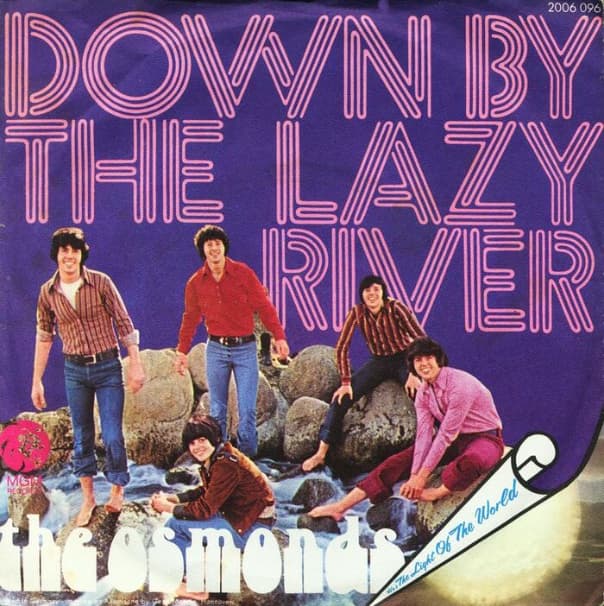
The Sweet, Simple Serenade of Youthful Love
Ah, to cast our minds back to a simpler time, to an era brimming with the innocent charm and infectious energy that only youth can truly embody. For many of us, particularly those who came of age amidst the vibrant tapestry of the early 1970s, the name The Osmonds conjures up a cascade of vivid memories. They were, without a doubt, a phenomenon – a clean-cut, talented, and undeniably handsome sibling act that captivated audiences worldwide. And nestled within their impressive discography, a particular gem shines with an almost iridescent glow, a song that, upon its release, seemed to perfectly capture the essence of idyllic young love: “Down By The Lazy River.”
This delightful track, released in 1972, didn’t just drift idly by on the airwaves; it made a significant splash, peaking at an impressive number 4 on the Billboard Hot 100 chart. For a group that already boasted a string of hits, this was yet another testament to their enduring appeal and the sheer magnetism they held over the pop music landscape. It was a time when bubblegum pop met earnest rock sensibilities, and The Osmonds, with their undeniable harmonies and wholesome image, were at the very forefront of this harmonious convergence.
But beyond the chart statistics and the undeniable talent, what truly made “Down By The Lazy River” resonate so deeply? The story behind the song, while perhaps not dramatic in the rock-and-roll sense, is one of genuine collaborative creativity. Unlike some of their earlier hits that were penned by external songwriters, “Down By The Lazy River” was largely an in-house creation. Alan Osmond, the eldest brother and the group’s de facto leader, along with Merrill Osmond, shared writing credits. This wasn’t merely a business decision; it was a testament to their growing artistic maturity and their desire to craft narratives that truly reflected their own experiences and aspirations.
The song itself is a beautiful, almost pastoral ode to a burgeoning romance unfolding in a serene, natural setting. It paints a picture, vivid and inviting, of two young lovers spending a carefree day by the tranquil waters of a lazy river. There’s a palpable sense of peace, a feeling of being utterly consumed by the moment, where the world outside simply ceases to exist. The lyrics speak of the simple pleasures – “lying in the grass, just watching clouds drift by,” “holding hands, feeling fine” – these are not grand declarations of undying love, but rather the quiet, intimate moments that form the true foundation of affection. It’s a testament to the idea that sometimes, the most profound connections are forged in the simplest of settings, far from the madding crowd, with only the gentle murmur of nature as a witness.
For many of us, this song served as an auditory postcard from our own youth, recalling those first tentative steps into the world of romance. Perhaps it was a stolen glance in a school hallway, a shared smile across a crowded room, or a quiet afternoon spent with someone who made your heart flutter just a little bit faster. “Down By The Lazy River” became the soundtrack to those nascent feelings, evoking a universal longing for connection and the intoxicating thrill of discovering another soul. It wasn’t about flashy displays or dramatic declarations; it was about the quiet certainty of shared moments, the comfort of companionship, and the budding understanding that true happiness often lies in the understated beauty of being together.
Listening to it today, all these years later, the melody still possesses that same innocent charm, that same gentle sway. It’s a journey back in time, a nostalgic embrace of a period when life seemed a little less complicated, and the promise of young love felt limitless. The Osmonds, through this timeless tune, gifted us a sonic sanctuary, a place where we can revisit those cherished memories, and for a few brief moments, be “down by the lazy river” once more, lost in the sweet serenade of youth.